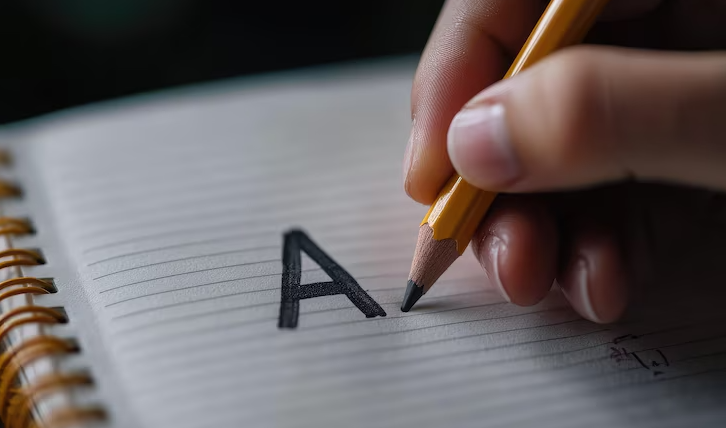
Composition in English is way more than setting words down on paper. You want to merge the combination of structure, creativity, and purpose in writing that is impactful, purposeful, and clear. Keeping these in mind as one is writing a composition can allow for effectiveness, but also enjoyment for the reader. Below, we will look at some helpful tips on writing with a purpose and developing compositions that leave a lasting impression.
Understanding the Purpose of a Composition
Before you start wandering, you should always redefine your purpose. What is the purpose of this writing? Are you trying to inform, persuade, or entertain your reader? If you determine your purpose early, then you will have a clear path to follow when you write. This one simple act can shape your tone, style, and even word choice toward your writing.
- Purpose: Choose your aim: either to inform, persuade, or entertain.
- Keep consistency: the tone, style, and purpose have to be alike throughout the write-up.
Structure Your Essay for Impact
Basically, your essay structure conveys your message across. The well-structured essay consists of three parts: an introduction, a body, and a conclusion. This provided the different roles that each section is assigned to play in guiding readers through your ideas.
- Introduction: Start with a hook that grabs attention and presents the main idea.
- Body Paragraphs: These are the paragraphs to help develop your main idea with specific details and examples.
- Conclusion: Summarise your major points again and reiterate the purpose of the composition.
Writing an Interesting Introduction
This is the first impression of your essay, so it should not miss the mark. Start with that one sentence that will make the reader interested. It might be an interesting fact, a question, or even a statement that makes a point about the topic. Doing so would not only capture their attention but also set the right tone for the essay.
- Open the Reader’s Mind: Pose a question or statement that will intrigue the reader.
- Put the main idea: Let the reader know what your composition will be about.
Writing Clear and Concise Body Paragraphs
In a composition, the body paragraphs elaborate on your ideas. Each paragraph discusses only one point that ties back to your main idea. Be sure to make use of short and clear sentences. By using transitional words, you maintain a good flow between the sentences and between various ideas or paragraphs. This way, readers will be able to read your thoughts, and the composition will stay coherent.
- Focus on One Idea per Paragraph: Stick to one main point and elaborate on it.
- Provide Details: Use supporting examples, facts, or evidence that back up your point.
- Use Transitional Words: Words such as “furthermore,” “in addition,” “however,” and “therefore” assist in flowing your ideas.
Using Transitional Words Effectively
Transitional words do a great deal to improve the flow of a paper. They create bridges from one idea to another so that they make the subject of the paper flow together from one thought to the next. Be sure to integrate them frequently as you write a composition so you can lead your reader through your points. Here are some of the more common transitional words.
- Moreover: Provides more information about the previous point.
- On the Other Hand: Introduces an opposing idea or point of view.
- For Example: Bring in an example to illustrate their point.
- Therefore: Concludes a point or offers a result of a preceding idea.
- Pro Tip: Aim at using 3-4 transitional words in every paragraph to maintain continuity and the flow with the readers’ interest.
Making Sentences Short and Powerful
Though long sentences and sophisticated words assist a lot in conveying the information well, simplicity is always the best. Clear and simple sentences in your composition make the document universal to many of your intended readers. It is specifically important when writing to a younger audience, like 20-year-olds, who feel clearer and more direct. To be effective in writing, make the word and sentence structure easy and short in passing the message to the reader.
- Avoid Long Sentences: Be sure to make short and simple sentences.
- Make it Simple: Use words that are easy to understand and avoid jargon.
The Need to Revise and Edit
No composition is complete the first time. You will need to revise and edit to clarify, combine, and correct. As soon as you complete a first draft, put it aside before you start revising. You will have a fresh look at your work. Take a look at your transitions, sentence structure, and overall flow. Be sure your composition is free of grammatical errors and that each paragraph is effective in supporting your main idea.
- Take a Break Before Revising: It provides freshness to the mind, where spotting errors is much easier.
- Transitions: Ensure there is a logical relationship between your ideas in each paragraph.
- Clarity and coherency check: Figures are explained, meaning that each section should make a point connected and refer back to the thesis.
Writing with Purpose: Conclusion
A good English composition should be written purposefully, coherently, and structured. It demands that you know the purpose of writing, the proper establishment of a structure, and the usage of transitional words effectively for you to transit effortlessly. Make your sentence structures easy and short so that they are readable and clear to the recipient. Finally, rewrite and thoroughly edit your work to polish it and eliminate mistakes.
Writing with purpose is about more than just meeting word counts or filling pages. It’s about making your message clear and compelling to the reader. By applying the tips and strategies outlined above, you’ll be well on your way to writing a composition that not only fulfils its purpose but also leaves a lasting impact.
- Write with Intent: Always know your purpose and let it direct your writing.
- Keep it Simple: Easy words and short sentences ensure maximum clarity. Revise and
- Edit: Polishing your work is essential for creating a strong, impactful composition.
Final Thoughts
Writing a composition is much more than merely piecing together bits of information according to a formula. It is really an effort to effectively reach your reader, and tell the reader something, and each word really should have a reason. Writing with a purpose will help to make the composition much more effective at what it hopes to accomplish in information, persuasion, and entertainment. Always stay on track with your main idea, connect things with transition words, and revise until you get it perfect.




